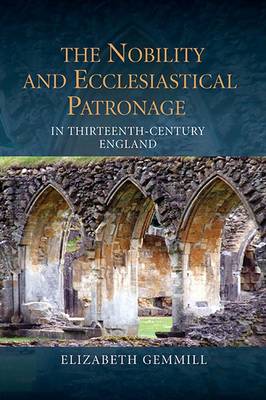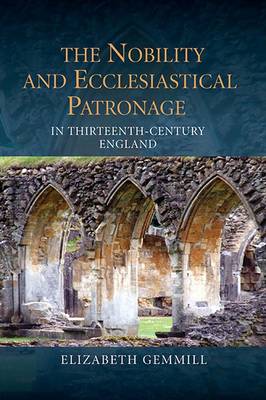
Bedankt voor het vertrouwen het afgelopen jaar! Om jou te bedanken bieden we GRATIS verzending (in België) aan op alles gedurende de hele maand januari.
- Afhalen na 1 uur in een winkel met voorraad
- In januari gratis thuislevering in België
- Ruim aanbod met 7 miljoen producten
Bedankt voor het vertrouwen het afgelopen jaar! Om jou te bedanken bieden we GRATIS verzending (in België) aan op alles gedurende de hele maand januari.
- Afhalen na 1 uur in een winkel met voorraad
- In januari gratis thuislevering in België
- Ruim aanbod met 7 miljoen producten
Zoeken
The Nobility and Ecclesiastical Patronage in Thirteenth-Century England
Elizabeth Gemmill
€ 177,45
+ 354 punten
Omschrijving
This book provides the first full-length, integrated study of the ecclesiastical patronage rights of the nobility in medieval England. It examines the nature and extent of these rights, how they were used, why and for whom they were valuable, what challenges lay patrons faced, and how they looked to the future in making gifts to the Church. It takes as its focus the thirteenth century, a critical period for the survival and development of these rights, being a time of ambitious Church reform, of great change in patterns of land ownership in the ranks of the higher nobility, and of bold assertion by the English Crown of its claims to control Church property. The thirteenth century also saw a proliferation of record keeping on the part of kings, bishop and nobility, and the author uses new evidence from a range of documentary sources to explore the nature of the relationships between the English nobility, the Church and its clergy, a relationship in which patronage was the essential feature.
Specificaties
Betrokkenen
- Auteur(s):
- Uitgeverij:
Inhoud
- Aantal bladzijden:
- 254
- Taal:
- Engels
- Reeks:
- Reeksnummer:
- nr. 40
Eigenschappen
- Productcode (EAN):
- 9781843838128
- Verschijningsdatum:
- 16/04/2013
- Uitvoering:
- Hardcover
- Formaat:
- Genaaid
- Afmetingen:
- 160 mm x 239 mm
- Gewicht:
- 566 g

Alleen bij Standaard Boekhandel
+ 354 punten op je klantenkaart van Standaard Boekhandel
Beoordelingen
We publiceren alleen reviews die voldoen aan de voorwaarden voor reviews. Bekijk onze voorwaarden voor reviews.









